Search Images
Browse Content (p. 1356)
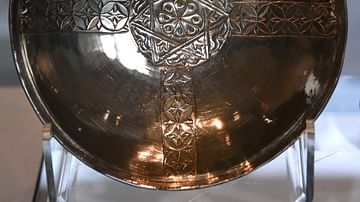
Image
Silver Bowl From Sutton Hoo
This shallow silver bowl is from a set of ten that were stacked upside-down inside the Suton Hoo burial chamber. They were made in the Eastern Mediterranean, possibly for religious use; their cross-shaped design may have had a Christian meaning...
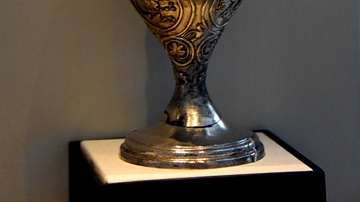
Image
Flask from the Esquiline Treasure
This vessel was used for serving drinks at high status dinners. Typically, item like this was inscribed with good wishes for their users. The flask is decorated with cupids, animals, and fruit. Part of the Esquiline Treasure, which was discovered...

Image
Tang Dynasty Earthenware Camel
Tang Dynasty camel, 650s-700s CE. Earthenware with pigment. 53 CM (Height)
(Xi'an Museum. Photographed at the Art Gallery of NSW, Sydney Australia)
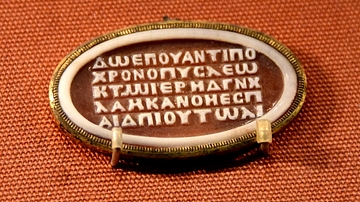
Image
Sardonyx Cameo Showing Nonsense Greek Inscription
Skillful Roman cameo-carvers exploited the tonal contrast of some stones. This could be a simple two-tone contrast or a more subtle variation using all available gradations of shade. Sardonyx was particularly valued as a cameo-stone. From...
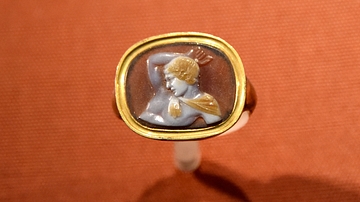
Image
Actaeon Sardonyx Cameo
Skillful Roman cameo-carvers exploited the tonal contrast of some stones. This could be a simple two-tone contrast or a more subtle variation using all available gradations of shade. Sardonyx was particularly valued as a cameo-stone. Bequeathed...
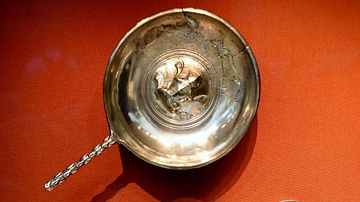
Image
Spoons & Patera from the Carthage Treasure
These spoons are an unusual shape for the Late Roman Period. Their decoration, inlaid with niello (a black metal alloy), demonstrates the fine craftsmanship represented by the Carthage Treasure. The Cross symbol suggests that the owners were...
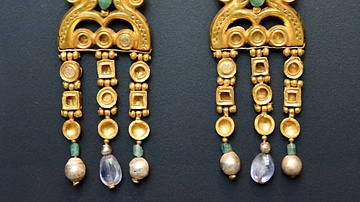
Image
Byzantine Gold Earrings from Egypt
These earrings show the skill and the quality achieved by Byzantine jewellers. They come from a treasure of 36 pieces found in Egypt (the treasure is shared between museums in London, Berlin, and New York), which at this time, was part of...
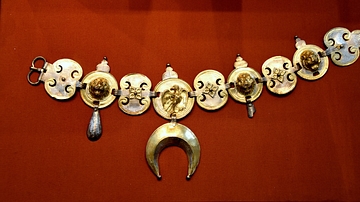
Image
Horse Trappings from the Eaquiline Treasure
These gilded silver ornaments were strung around the neck of horses owned by aristocratic Roman families, as a way of displaying wealth and prestige. Four complete and two partial sets were found within the Esquiline Treasure. They are the...

Image
Lombardic Brooches
Lombardic disc brooches from modern-day Italy, 7th century. The garnet on the gold brooch (right) is recycled from an earlier piece of jewellery while the other shows an enamelled woman bust (left; the so-called the Castellani Brooch). The...
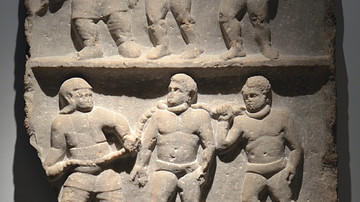
Image
Roman Slaves Relief Slab
Marble relief depicting two pairs of collared slaves being led on ropes by helmeted men, from Smyrna (Izmir, Turkey), 200 CE. (Ashmolean Museum, Oxford)